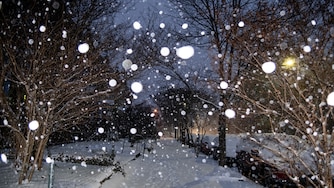The state budget has been passed, lawmakers are finally getting some sleep and everyone is taking stock of wins and losses after a slog of a legislative session.
Plenty of transportation-related bills passed that will impact the ways Marylanders move around the state, and plenty of notable ones didn’t.
“Priorities one, two and three” for the state transportation department were making the budget work, Transportation Secretary Paul Wiedefeld said in an interview last week. He and other officials and advocates are applauding the balancing act that took place.
Even still, department priorities like a bill to streamline transit-oriented development around train stations, and one to update how the state prioritizes big capital transportation projects didn’t make it. It left some advocates, particularly climate-conscious ones, worried that the department got its money but without the proper guardrails.
For all the transit nerds and traffic trolls, here are some of the big takeaways:
1. Show me the money
The state transportation budget has been headed down a slippery road for a couple of years now, as a mix of declining revenue and increased construction costs have forced state highway and transit agencies to defer critical projects.
The transportation trust fund is facing a “dual pressure” of revenue struggling to keep pace with inflation as highways, bridges and trains age, Wiedefeld said.
“A lot of the revenues just don’t grow at that rate, and then you add on top of it the dependency on motor fuel revenues and the electrification of the fleet,” Wiedefeld said, referencing the gas tax. It’s bringing in less money as cars get more fuel-efficient and more people switch to EVs.
The next couple years look better than many expected, though, after some money MacGyvering that lawmakers used to pass a balanced budget. The transportation trust fund is getting a bump, thanks to:
- A portion of the new 2% capital gains tax for those who earn more than $350,000;
- A raise in titling fees for new and used vehicles to $200;
- An increase in the vehicle excise tax to 6.5%;
- A $5 fee on the purchase of a new tire (four tires = $20);
- A 3.5% excise tax on certain rental cars;
- An increase in the vehicle emissions test fee and late fee to $30.
All said, it will bring in slightly more money than what Gov. Wes Moore originally proposed. It will also help the department keep more federal funding commitments that require state money to unlock.
Operating budgets at the Maryland Transit Administration, the State Highway Administration and other sub agencies will therefore remain intact, meaning no drastic changes to bus routes, MARC train schedules or litter pickup on highways.
On the capital side, it means keeping rehabilitation money for the Baltimore light rail, who many once feared would be subject to catastrophic cuts, and major highway projects, like widening portions of US Route 15 and Interstate 81 in Western Maryland.
2. Where the rubber meets the road
Here’s a look at some of the vehicle-related bills that passed:
3. Transit
- Establish a working group to study alternative structures for the Maryland Transit Administration to give it more local control. (Didn’t this already happen? Yes, sort of, but Annapolis loves a good commission).
- Allowing those who live within a quarter-mile of the Purple Line light rail now under construction in suburban Washington, D.C., to ride it for free for the first month after it opens, likely 2027. And businesses affected by construction will get some promotional help, too.
- Direct the MTA to establish a rider code of conduct and prohibit people who have assaulted public transit operators from riding an MTA vehicle.
4. Notable stuff that didn’t pass
- More enforcement measures for Maryland drivers with those pesky Virginia license plates (and other out-of-state tags, too).
- An attempt to streamline the process for transit-oriented development next to train stations (because why would we want to get rid of those beautiful, half-empty parking lots?).
- A requirement that certain highway expansion projects also include extra greenhouse-gas mitigation efforts, and that the transportation budget be net neutral from an emissions perspective (big win, carbon fans).
- A green light for the State Highway Administration to put speed cameras in known high-crash corridors.
- A requirement for electric vehicle drivers to pay a yearly user fee. The gas tax, which significantly funds transportation projects statewide, has traditionally served as this, the idea being: you drive more (use more gas), you pay more for upkeep of the roads. How will operators of cars that don’t use gas pay their share? We still don’t know.
- Prohibiting insurance companies from requiring drivers to use telematics data tracking software as a condition for getting a policy, and tightening regulation around that software.
- Establish a pilot program to try out speed limiters (a device that physically prevents a car from going over the speed limit) for certain offenders who can’t seem to slow down on their own. The bill had bipartisan support and no apparent pushback, but it still fell short.





Comments
Welcome to The Banner's subscriber-only commenting community. Please review our community guidelines.